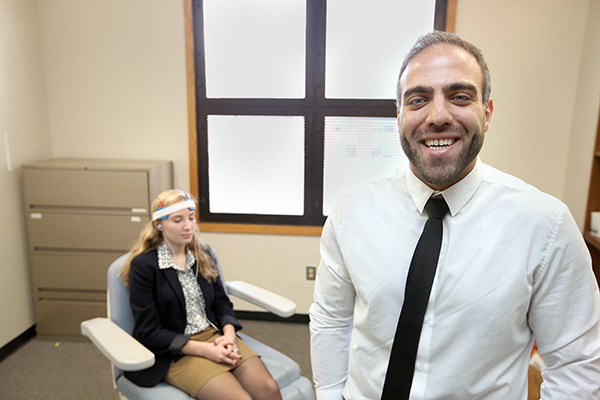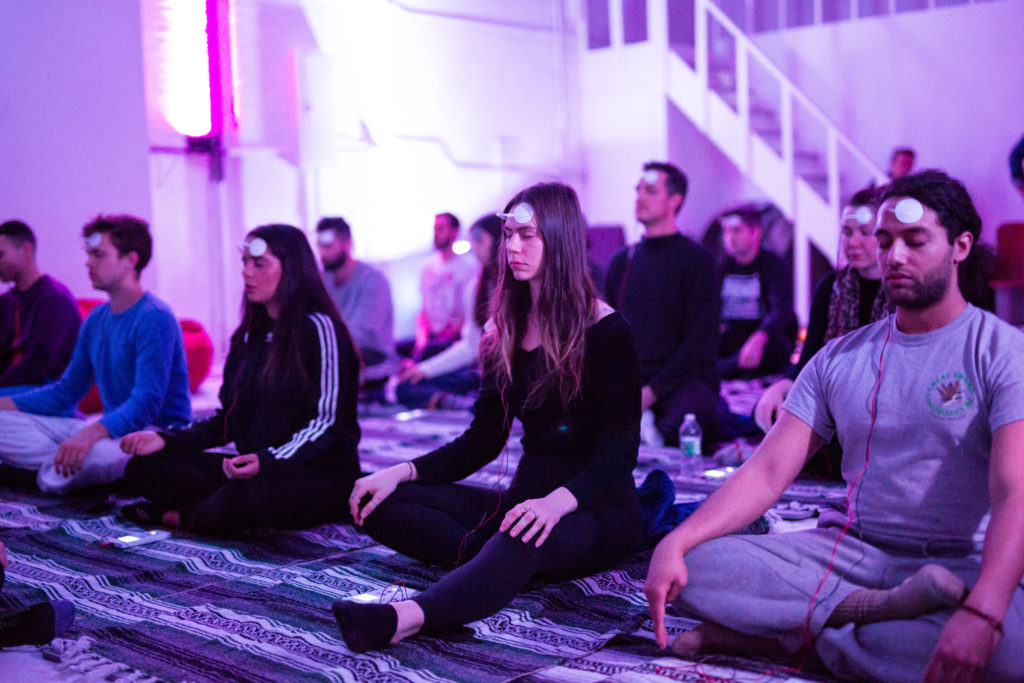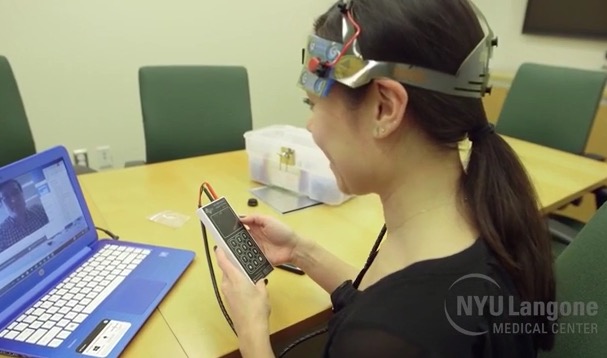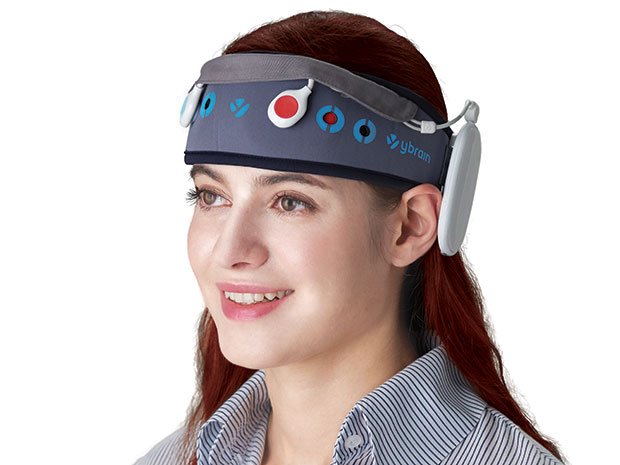This tweet, posted August 3, 2018, reminded me of Bashar W. Badran’s study (story below from 2017). Following along in the links I see that Badran has been testing a new ‘e-meditation’ device called Zendo. It’s currently not available to the general public, but you can see it in action in the photos below the tweet. You can sign up to be notified when the device becomes available here: https://e-meditation.com/about
E-meditation @ NYC Neuromodulation+NANS Conference
Read about E-mediation: https://t.co/7UKN3vc1Z2
Register for the meeting his week for best rates: https://t.co/JcMA83lY8Q
Rigorous program includes sessions science of "Neurotechnolgy for Mindfulness" https://t.co/FRTThY2fah https://t.co/KwBWD4h1WQ
— Marom Bikson (@MaromBikson) August 3, 2018
Supercharge your zen (pdf) The benefits of yoga and meditation are plentiful, but they take years of dedicated practice to achieve. Could a zap to the brain offer a shortcut?
I had previously posted this in a comment. Sourced from the original study.
Each 20min E- meditation visit consisted of one of three randomized stimulation conditions (sham, active 1mA, or 2mA; anode – EEG F8, cathode – left supraorbital) delivered via a Chatanooga IontoTM stimulator and 2in x 2in sponge electrodes. Stimulation was synchronized with a guided mindfulness recording (recorded by ELG) lasting 20min.
Which is what’s depicted in the photo below.
Original article posted 2/12/17
Full article: Is e-meditation wave of the future?

Neuroscience doctoral student Bashar W. Badran is exploring the Use of tDCS to enhance Mindfulness Meditation (E-Meditation)
MUSC Research Assistant Caroline Summer is in background, demonstrating the tDCS device.
Photo by Sarah Pack
Badran, who used two different mindfulness scales and mood rating scales on 15 participants in a double-blind study, found that feelings of calmness increased almost 2.5 times in the group receiving active tDCS-paired meditation compared to the placebo. Individuals receiving the sham stimulation had just a 5 percent increase in calmness rating.
Paper (Paywall): A Double-Blind Study Exploring the Use of Transcranial Direct Current Stimulation (tDCS) to Potentially Enhance Mindfulness Meditation (E-Meditation)



 Using remote rehabilitation to administer tDCS to MS patients.
Using remote rehabilitation to administer tDCS to MS patients.